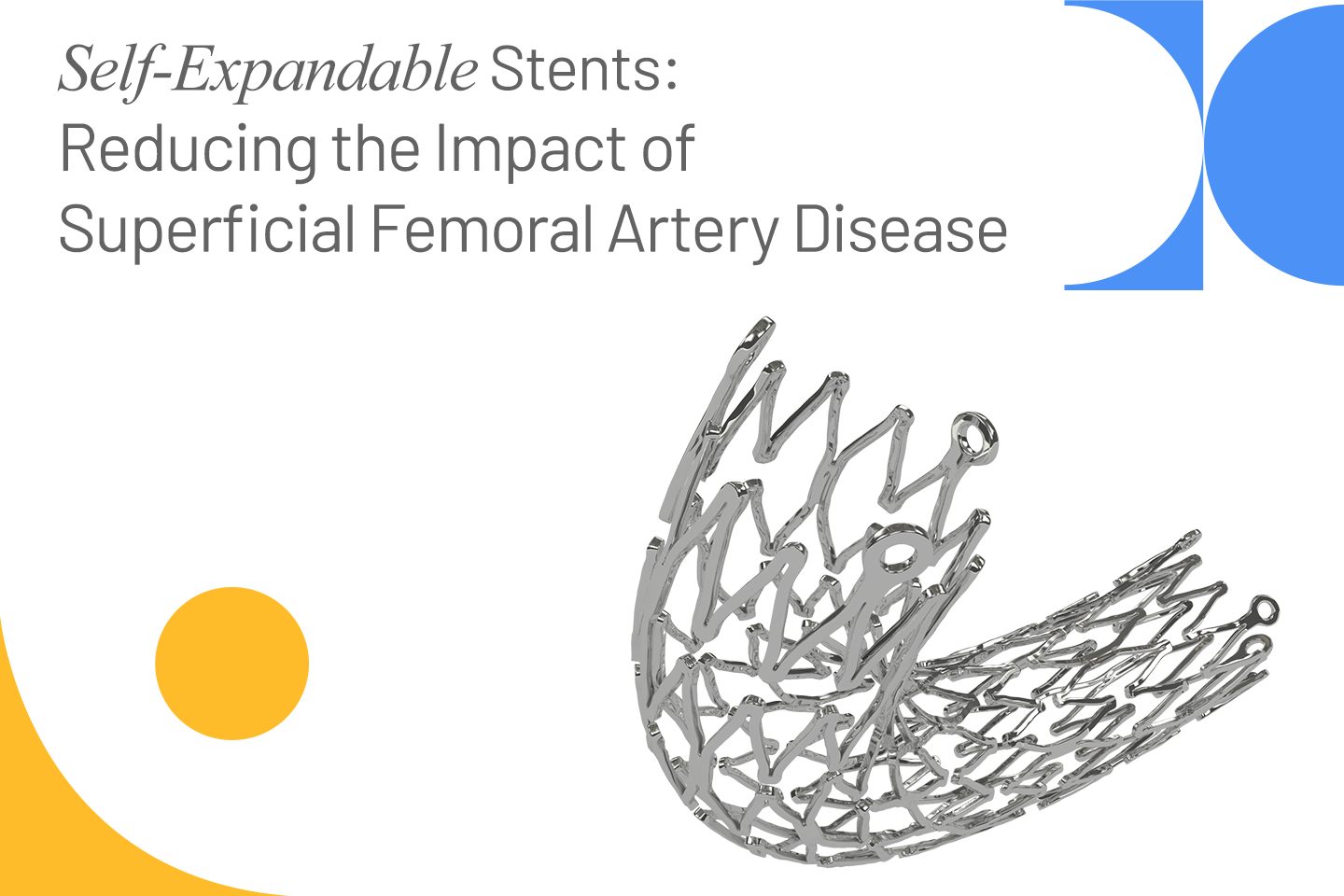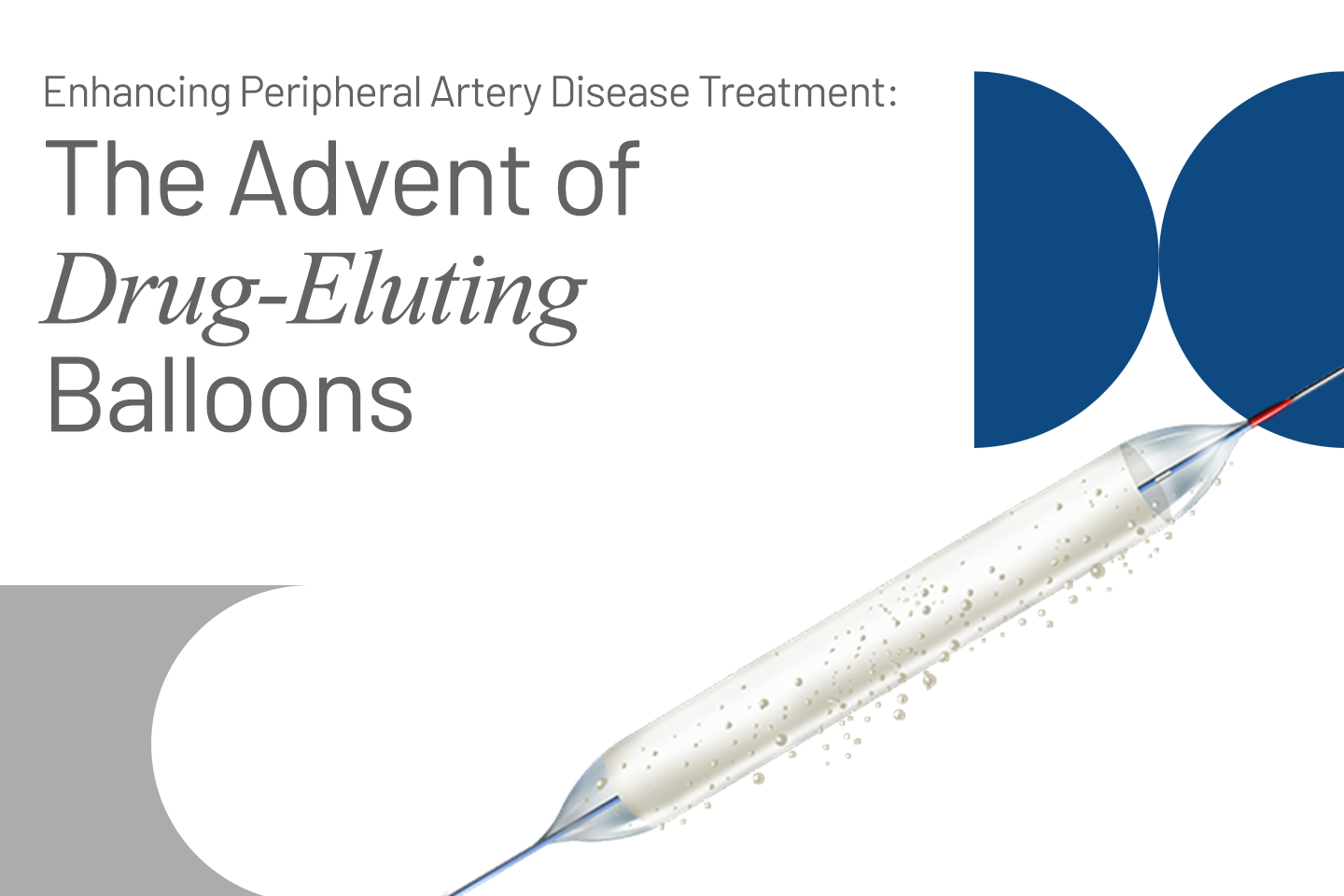Medical Devices
Self-Expandable Stents: Reducing the Impact of Superficial Femoral Artery Disease

Running the entire length of our thighs, the superficial femoral artery is vital for delivering oxygen-rich blood to the lower leg, enabling essential movements like walking, running, and even standing. Its unique anatomical location makes it particularly susceptible to a range of forces—such as extension, flexion, and compression—that can impact blood flow dynamics. As a result, the superficial femoral artery is one of the most commonly affected arteries in patients with risk factors for peripheral artery disease, which is characterized by blockages in the arteries supplying blood to the limbs.
The implications of superficial femoral artery occlusions can be severe and far-reaching. When blockages occur, they disrupt the normal flow of blood, leading to a range of debilitating symptoms. Patients may experience chronic pain, cramping, and numbness in their legs, especially during physical activities, hindering their mobility and quality of life. If left untreated, these blockages can escalate into critical limb threatening ischemia (CLTI), a serious medical condition where tissues suffer from inadequate blood supply. This situation can result in severe complications, including tissue necrosis, gangrene, and even limb amputation.
Traditionally, occlusions in the superficial femoral artery were addressed through invasive surgical procedures such as femoropopliteal bypass surgeries. While effective, these approaches would often involve longer recovery times and increased patient risk. In addition, complications can arise from challenges like difficulty in crossing long-segment occlusions and high restenosis rates.
Over the years, advancements in medical technology have revolutionized the way we approach these blockages. Innovations such as hydrophilic wires, low-profile angioplasty balloons, and self-expanding nitinol stents have significantly expanded the number of superficial femoral artery lesions that can be effectively treated through endovascular techniques.
As Dr. Suhail Naseem Bukhari, Senior Director of Vascular and Endovascular Surgery at BLK-MAX Super Specialty Hospital in New Delhi, explains, “Very commonly, we see blockage of the superficial femoral artery. Earlier, we used to do bypass surgery, now we can treat these blockages with endovascular treatment. That is, first, we can pass the wire through the tight lesion, then we do the ballooning of the artery, and after that, we use the self-expandable stents.”
Self-expanding stents are particularly well-suited for the superficial femoral artery due to their ability to adapt to the artery's dynamic environment. Unlike traditional balloon expandable stents, which tend to be rigid and inflexible, self-expanding stent options like Meril’s Promesa™ BMS offer a unique combination of flexibility and strength, allowing the stent to expand fully in the artery while withstanding the external forces acting on it. In the case of long lesions within the superficial femoral artery, stenting is frequently employed as a “bail-out” procedure following drug-coated balloon angioplasty. Remarkably, it is estimated that stents are used to secure the desired outcome in over 40% of such cases, reflecting their importance in modern vascular interventions.
A self-expanding Nitinol peripheral stent system, Meril’s Promesa™ BMS features a hybrid stent architecture, which combines open-cell and closed-cell design to deliver a perfect balance of flexibility, conformability, and strength. The stent is electro-polished, which enhances its durability by reducing microcracks and the risk of stent fracture—a critical concern in the long-term success of vascular interventions. This also makes Promesa™ BMS more resistant to axial and radial fatigue, ensuring that the stent continues to perform well under the constant mechanical stress of the body.
Placement accuracy is another advantage of the Promesa™ BMS. With radiopaque markers and platinum-iridium marker bands on the inner metal shaft, operators can achieve greater precision during the procedure, ensuring the stent is placed exactly where it’s needed. Its 6F system allows enough room for contrast injections, providing anatomical visibility during stent delivery. This level of accuracy is essential, particularly in complex cases involving tortuous arteries or challenging anatomical conditions.
Praising the design and affordability of the Promesa™ BMS, Dr. Prashant Sarda, Associate Professor and Consultant in Charge of the Department of Interventional Radiology at Shri Mahant Indiresh Hospital in Dehradun, elaborates that they have been using the Promesa™ BMS self-expanding nitinol peripheral stent for treating superficial femoral artery lesions and other lesions for quite some time. This stent has proven to be highly promising and cost-effective, especially for superficial femoral artery lesions that are resistant to balloon angioplasty and other traditional treatments.
Despite the advancements in treatment options for peripheral artery disease, many patients remain undiagnosed or untreated, highlighting a critical need for greater awareness and early intervention in the medical community and beyond. It is imperative to educate both healthcare providers and patients about the symptoms and risk factors associated with peripheral artery disease, ensuring that timely medical attention is sought. The future of superficial femoral artery disease management lies not just in innovative technologies like the Promesa™ BMS, but also in enhancing public knowledge about the importance of vascular health. By equipping healthcare providers with the right tools and fostering a culture of early diagnosis, we can improve patient outcomes significantly.
With continued advancements in endovascular treatments, we have the opportunity to transform the landscape of peripheral artery disease management. By prioritizing proactive care and leveraging cutting-edge solutions, we can help patients regain their mobility, improve their quality of life, and avoid the dire consequences of untreated superficial femoral artery occlusions.





